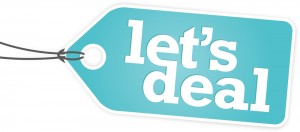 Coca-Cola invented couponing in 1894 and since then it has developed into a marketing tactic that accounts for billions in sales every year. Discounting, couponing and bargains have rapidly progressed throughout the years and now can be attributed as one of the largest factors in customer acquisition and loyalty.
Coca-Cola invented couponing in 1894 and since then it has developed into a marketing tactic that accounts for billions in sales every year. Discounting, couponing and bargains have rapidly progressed throughout the years and now can be attributed as one of the largest factors in customer acquisition and loyalty.
In February JC Penney’s tried to appeal to shoppers by offering everyday low prices in stores. They did so by removing all coupons with the pretense the customer should not have to wait for a sale. In the three months following this change, sales fell 20 percent, the CEO was fired and now they are still in a state of recovery. This retail giant seemed to forget consumers make decisions based on emotion rather than rational thought.
Shoppers saved $4.6 billion with coupon use in 2011, an increase of $500 million from the previous year, according to reports from NCH Marketing Services. Economists predict this trend will continue to increase in coming years. Consumers love to feel like they are purchasing goods and services for a discount, even if it is not ultimately true. JC Penney’s marketing mistake showed businesses the utter importance of a perceived deal.
Businesses also need to realize sending out too many coupons can have an adverse effect. Consumers will be accustomed to only buying products or services if a discount offer is at hand. In the same manner, not sending enough offers can attribute to consumers seeking out other discounts from competitors. We have found that one to three offers a month tends to keep savvy customers loyal to a product/service.
Recent research from Money Saver found that 86% of consumers said they have used coupons or discount codes, and 63% of these consumers said they would not have made the purchase without the coupon. Many business owners already know that the deal itself does not have to be substantial, yet the perceived value of the offer must convey high savings. This is what will make a sale regardless of what the actual margins are.
What is the best medium to distribute coupons? Many distribution channels are easier than direct mail but few are as responsive. Giving the consumer the ability to place a coupon in their purse, wallet, or car glove box where it is readily available is a great convenience. It simplifies the process by not have to sort through junk mail, PPC ads, and other mediums because consumers know it takes thought and time to develop a mail piece.
While some businesses resort to online coupons, mail tends to break through the digital noise and offers a moment for a targeted message to resonate. The problem with online coupons, according to Deliver Magazine is that the business will not reach all potential customers. Daily deal sites may be creating heavy traffic, but they are not creating brand loyalty. Online coupons are a quick bang for your buck, but direct mail reaches a larger audience and seems to stick around longer.
Valuable lessons can be learned from the success of Coca-Cola branding their product over 100 years ago with a coupon to the recent failure JC Penney’s made taking away coupons.
What do businesses lose by offering coupons?
